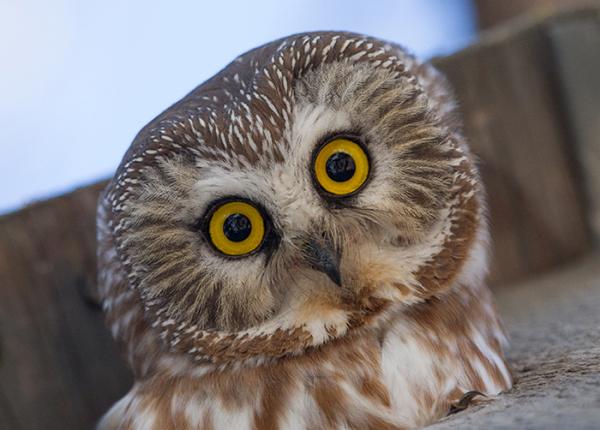Photos by Shaun McNaughton
I’ve described for you before my experiences with owl feathers being much less dense and rigid than I’d have expected, and these photos really capture that. Having some give to them lets the individual barbs move around, decreasing the flapping noise.
This is also likely why they have larger wings for their size than other birds, to make up for the loss of lift for not having denser flight feathers.


Oh ok gotcha! That makes sense.
I had no idea there was so much involved but i guess it would be the same for showing any bird of prey
The laws and penalties are extreme so as to make it either unprofitable or not worth the risk to abuse the animals, but like a lot of other things, the rules make it much more work for anyone to do the work with good intentions as well.
My favorite example I’ve heard so far was at the spot near my work. I saw one day the bald eagle was gone and I learned he passed away. In talking to the raptor guy there, he said it had been in his freezer for a few months awaiting instructions from the feds, as with a bald eagle, pretty much the most protected bird in the country, it has to get sent to DC to be DNA sequenced, and the feathers gets individually cataloged and distributed to Native Americans who have gone through an extensive permitting process to get on a wait list for feathers for cultural purposes.
The even wilder part…he has had another eagle in the freezer for 10 years now! That one died of bird flu, and that makes it some top biohazard, so there is no legal framework in place to arrange its transport, so until such time as the bureaucratic machine decides it’s time to figure that out, the eagle is just going to keep chilling there.
I think penalties for possessing any parts of most protected birds and animals is like 10 years in prison and a 5 or 6 figure fine. That really deters people doing things they shouldn’t be doing like hunting them for feathers, but it also makes it very hairy to work with them in some instances.
Same idea behind making it burdensome to display them. You don’t want somebody cramming them in PetSmart bird cages and calling that a zoo, because you know someone would do it in a second to make a buck. Having visitor areas I’m sure can help raise money, but when the rehabs have to beg for every dollar already (no state or fed funding for any of them) most dont have the time and resources and patience to get zoo/display permits and build visitor accommodations.
All the rehabbers I meet seem to love talking, so don’t be afraid to ask them questions if you go see anyone. They won’t let you touch birds (i know, I try all the time) but you can occasionally find someone with feathers or other things or feel the fancy kangaroo leather gloves.
Wow that’s crazy! I didn’t know how strict the laws were but yeah it makes sense. And thanks for the tip about asking questions!